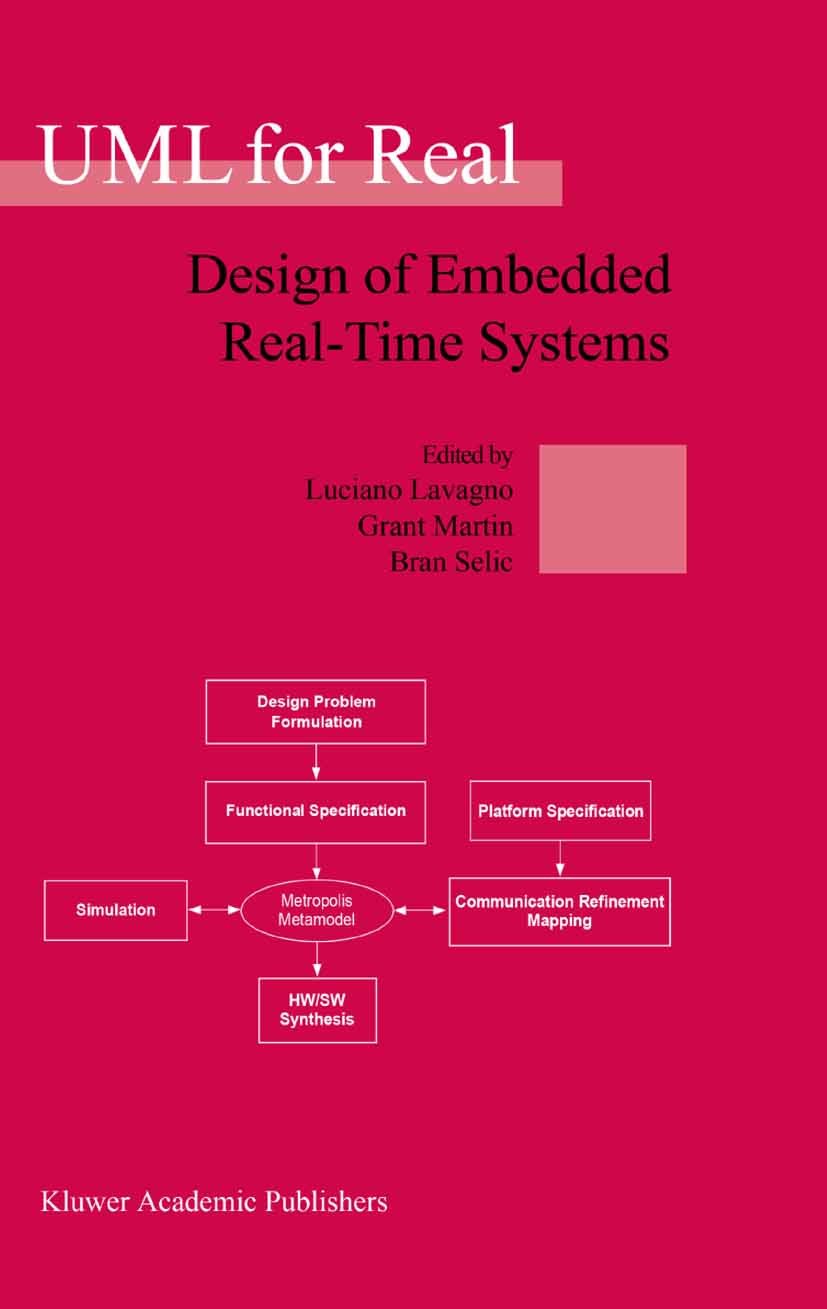| 书目名称 | UML for Real | | 副标题 | Design of Embedded R | | 编辑 | Luciano Lavagno,Grant Martin,Bran Selic | | 视频video | http://file.papertrans.cn/941/940063/940063.mp4 | | 图书封面 |  | | 描述 | The complexity of most real-time and embedded systems often exceeds that of other types of systems since, in addition to the usual spectrum of problems inherent in software, they need to deal with the complexities of the physical world. That world—as the proverbial Mr. Murphy tells us—is an unpredictable and often unfriendly place. Consequently, there is a very strong motivation to investigate and apply advanced design methods and technologies that could simplify and improve the reliability of real-time software design and implementation. As a result, from the first versions of UML issued in the mid 1990’s, designers of embedded and real-time systems have taken to UML with vigour and enthusiasm. However, the dream of a complete, model-driven design flow from specification through automated, optimised code generation, has been difficult to realise without some key improvements in UML semantics and syntax, specifically targeted to the real-time systems problem. With the enhancements in UML that have been proposed and are near standardisation with UML 2. 0, many of these improvements have been made. In the Spring of 2003, adoption of a formalised UML 2. 0 specification by the members | | 出版日期 | Book 2003 | | 关键词 | Quality of Service; Unified Modeling Language (UML); embedded; fine grained pattern; performance analysi | | 版次 | 1 | | doi | https://doi.org/10.1007/b105972 | | isbn_softcover | 978-1-4419-5368-1 | | isbn_ebook | 978-0-306-48738-5 | | copyright | Springer Science+Business Media New York 2003 |
The information of publication is updating

|
|
 |Archiver|手机版|小黑屋|
派博传思国际
( 京公网安备110108008328)
GMT+8, 2025-11-7 03:53
|Archiver|手机版|小黑屋|
派博传思国际
( 京公网安备110108008328)
GMT+8, 2025-11-7 03:53


